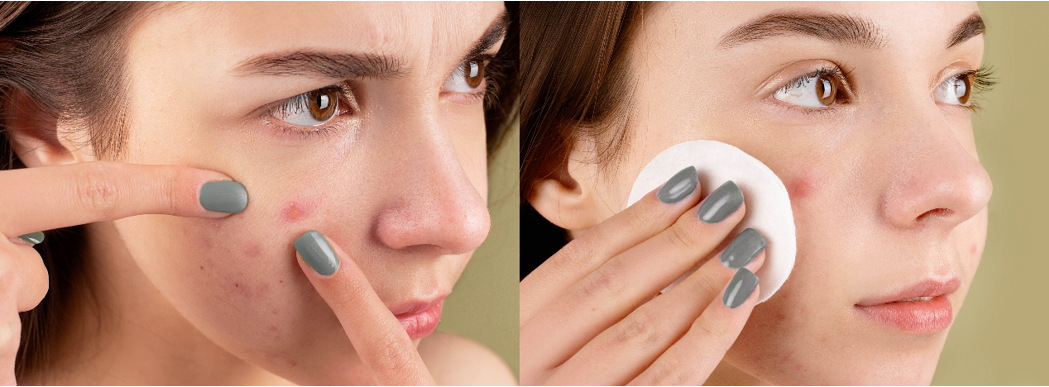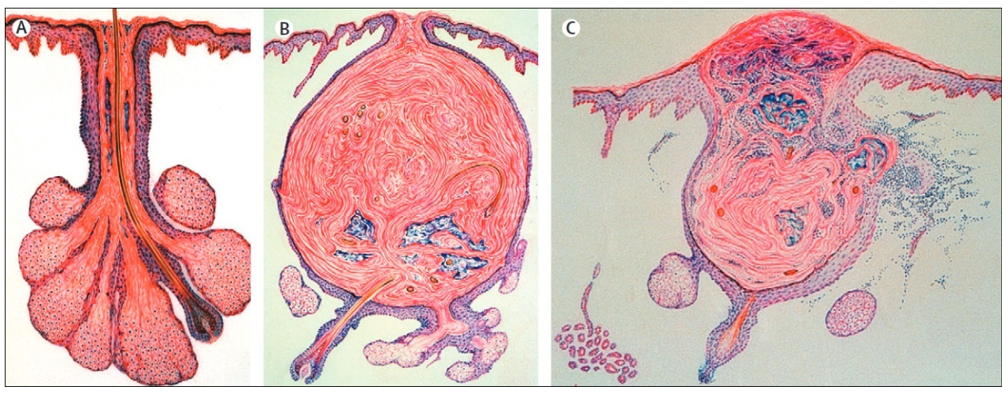- You are here: Home
- Applications
- Skin
- Cosmetics
- Skin Anti-Acne
Applications
-
Cell Services
- Cell Line Authentication
- Cell Surface Marker Validation Service
-
Cell Line Testing and Assays
- Toxicology Assay
- Drug-Resistant Cell Models
- Cell Viability Assays
- Cell Proliferation Assays
- Cell Migration Assays
- Soft Agar Colony Formation Assay Service
- SRB Assay
- Cell Apoptosis Assays
- Cell Cycle Assays
- Cell Angiogenesis Assays
- DNA/RNA Extraction
- Custom Cell & Tissue Lysate Service
- Cellular Phosphorylation Assays
- Stability Testing
- Sterility Testing
- Endotoxin Detection and Removal
- Phagocytosis Assays
- Cell-Based Screening and Profiling Services
- 3D-Based Services
- Custom Cell Services
- Cell-based LNP Evaluation
-
Stem Cell Research
- iPSC Generation
- iPSC Characterization
-
iPSC Differentiation
- Neural Stem Cells Differentiation Service from iPSC
- Astrocyte Differentiation Service from iPSC
- Retinal Pigment Epithelium (RPE) Differentiation Service from iPSC
- Cardiomyocyte Differentiation Service from iPSC
- T Cell, NK Cell Differentiation Service from iPSC
- Hepatocyte Differentiation Service from iPSC
- Beta Cell Differentiation Service from iPSC
- Brain Organoid Differentiation Service from iPSC
- Cardiac Organoid Differentiation Service from iPSC
- Kidney Organoid Differentiation Service from iPSC
- GABAnergic Neuron Differentiation Service from iPSC
- Undifferentiated iPSC Detection
- iPSC Gene Editing
- iPSC Expanding Service
- MSC Services
- Stem Cell Assay Development and Screening
- Cell Immortalization
-
ISH/FISH Services
- In Situ Hybridization (ISH) & RNAscope Service
- Fluorescent In Situ Hybridization
- FISH Probe Design, Synthesis and Testing Service
-
FISH Applications
- Multicolor FISH (M-FISH) Analysis
- Chromosome Analysis of ES and iPS Cells
- RNA FISH in Plant Service
- Mouse Model and PDX Analysis (FISH)
- Cell Transplantation Analysis (FISH)
- In Situ Detection of CAR-T Cells & Oncolytic Viruses
- CAR-T/CAR-NK Target Assessment Service (ISH)
- ImmunoFISH Analysis (FISH+IHC)
- Splice Variant Analysis (FISH)
- Telomere Length Analysis (Q-FISH)
- Telomere Length Analysis (qPCR assay)
- FISH Analysis of Microorganisms
- Neoplasms FISH Analysis
- CARD-FISH for Environmental Microorganisms (FISH)
- FISH Quality Control Services
- QuantiGene Plex Assay
- Circulating Tumor Cell (CTC) FISH
- mtRNA Analysis (FISH)
- In Situ Detection of Chemokines/Cytokines
- In Situ Detection of Virus
- Transgene Mapping (FISH)
- Transgene Mapping (Locus Amplification & Sequencing)
- Stable Cell Line Genetic Stability Testing
- Genetic Stability Testing (Locus Amplification & Sequencing + ddPCR)
- Clonality Analysis Service (FISH)
- Karyotyping (G-banded) Service
- Animal Chromosome Analysis (G-banded) Service
- I-FISH Service
- AAV Biodistribution Analysis (RNA ISH)
- Molecular Karyotyping (aCGH)
- Droplet Digital PCR (ddPCR) Service
- Digital ISH Image Quantification and Statistical Analysis
- SCE (Sister Chromatid Exchange) Analysis
- Biosample Services
- Histology Services
- Exosome Research Services
- In Vitro DMPK Services
-
In Vivo DMPK Services
- Pharmacokinetic and Toxicokinetic
- PK/PD Biomarker Analysis
- Bioavailability and Bioequivalence
- Bioanalytical Package
- Metabolite Profiling and Identification
- In Vivo Toxicity Study
- Mass Balance, Excretion and Expired Air Collection
- Administration Routes and Biofluid Sampling
- Quantitative Tissue Distribution
- Target Tissue Exposure
- In Vivo Blood-Brain-Barrier Assay
- Drug Toxicity Services
Skin Anti-Acne

Acne is a chronic inflammatory condition of the sebaceous unit of the hair follicle caused by androgen-induced increased sebum production, altered keratinization, inflammation, and bacterial colonization of the hair follicles on the face, neck, chest, and back by Propionibacterium Acnes.
Clinical features of acne include seborrhea, non-inflammatory lesions, inflammatory lesions, and scarring of various degrees. And the distribution of acne has been shown to correspond to the high density of follicular sebaceous gland units (face, neck, upper chest, shoulders, and back).
 Figure 1. Normal sebaceous follicle (A) and comedo (B), and inflammatory acne lesion with rupture of follicular wall and secondary inflammation (C) (Williams, et al. 2012).
Figure 1. Normal sebaceous follicle (A) and comedo (B), and inflammatory acne lesion with rupture of follicular wall and secondary inflammation (C) (Williams, et al. 2012).
Creative Bioarray provides antimicrobial activity determination assay, in vitro skin model assays to evaluate the anti-acne efficacy of your products.
Your Needs
- To screen active ingredients/formulations, and characterize the efficacy or toxicity, or safety of any chemicals for acne
- To evaluate the anti-acne effect of potential cosmetic products
- To look for a CRO performing skin anti-acne efficacy testing
- To find a customized testing service related to acne
Our Capability
In vitro skin models available
- Human sebocytes
- Normal human epidermal keratinocytes (NHEK)
- Human follicle dermal papilla cells (HFDPC)
- Microorganisms (Propionibacterium acnes)
- Reconstructed human epidermis (RHE)
Efficacy and Screening Tests available
- Evaluating the anti-acne efficacy of active substances/compounds
- Evaluating the anti-acne effect of different formulations
- Evaluating inflammatory suppressive capacity
- Customized testing based on customer needs
Endpoints
- Cell viability
- Inflammatory factors/ mediators
- Bacteria inhibition rate
- Sebum excretion
- Keratinisation
- Histology (H&E, Nile red staining, histopathological scoring)
Techniques
- qPCR, qPCRarray, RT-PCR
- ELISA
- Western-Blotting
- Specific immuno-labeling
- Histology (H&E, etc.)
- Microbial inhibition assay
- RNA extraction
- Protein extraction
- Macroscopy
Study Examples
| Microorganism | Minimum inhibitory concentration (MIC) |
| Cutibacterium acnes | <1/2048 |
| P.acnes clinical isolate | <1/2048 |
| AE1, anti-acne extract 1; AE2, anti-acne extract 2 | |
Table 1. Minimum inhibitory levels of AE1 and AE2 on both isolates of Propionibacterium acnes (Kılıç, et al. 2019).
 Figure 2. Expression levels of the selected genes as a fold change (Kılıç, et al. 2019).
Figure 2. Expression levels of the selected genes as a fold change (Kılıç, et al. 2019).
In vitro Skin Models
References
- Williams, Hywel C., Robert P. Dellavalle, and Sarah Garner. "Acne vulgaris." The Lancet 379.9813 (2012): 361-372.
- Kılıç, Songül, et al. "Efficacy of two plant extracts against acne vulgaris: initial results of microbiological tests and cell culture studies." Journal of cosmetic dermatology 18.4 (2019): 1061-1065.
Explore Other Options
For research use only. Not for any other purpose.

